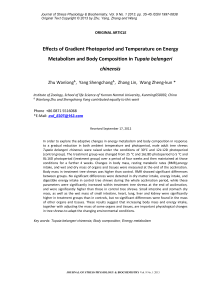Effects of gradient photoperiod and temperature on energy metabolism and body composition in Tupaia belangeri Chinensis
Автор: Zhu Wan-Long, Zhang Lin, Wang Zheng-Kun
Журнал: Журнал стресс-физиологии и биохимии @jspb
Статья в выпуске: 1 т.9, 2013 года.
Бесплатный доступ
In order to explore the adaptive changes in energy metabolism and body composition in response to a gradual reduction in both ambient temperature and photoperiod, male adult tree shrews Tupaia belangeri chinensis were raised under the conditions of 30 oC and 12L:12D photoperiod (control group). The treatment group was changed from 25 oC and 16L:8D photoperiod to 5 oC and 8L:16D photoperiod (treatment group) over a period of four weeks and then maintained at those conditions for a further 4 weeks. Changes in body mass, resting metabolic rates (RMR),energy intake, and wet and dry mass of organs and tissues were measured at the end of the acclimation. Body mass in treatment tree shrews was higher than control. RMR showed significant differences between groups. No significant differences were detected in dry matter intake, energy intake, and digestible energy intake in control tree shrews during the whole acclimation period, while these parameters were significantly increased within treatment tree shrews at the end of acclimation, and were significantly higher than those in control tree shrews. Small intestine and stomach dry mass, as well as the wet mass of small intestine, heart, lung, liver and kidney were significantly higher in treatment groups than in controls, but no significant differences were found in the mass of other organs and tissues. These results suggest that increasing body mass and energy intake, together with adjusting the mass of some organs and tissues, are important physiological changes in tree shrews to adapt the changing environmental conditions.
Tupaia belangeri chinensis, body composition, energy metabolism
Короткий адрес: https://sciup.org/14323720
IDR: 14323720
Текст научной статьи Effects of gradient photoperiod and temperature on energy metabolism and body composition in Tupaia belangeri Chinensis
Shortening of the photoperiod and lowing of ambient temperatures gradually are the main signal for the coming of winter (Heldmaier et al., 1985; Heldmaier et al., 1989). Body mass of some mammals obvious increased under short photoperiod, e.g. Dicrostonyx groenlandicus (Nagy et al., 1995). However, Phodopus sungorus (Klingenspor et al., 2000), Eothenomys miletus (Zhu et al., 2011) and Lasiopodomys brandtii (Zhao and Wang, 2005; Li and Wang, 2005) decreased body mass under short photoperiod. There was no effects of photoperiod on resting metabolic rate in Meriones unguiculatus (Li et al., 2003), but short photoperiod increased energy intake in M. Unguiculatus (Zhao and Wang, 2006a), L. Brandtii (Zhao and Wang, 2006b) and E. miletus (Zhu et al., 2011). Further, Organ weight and body composition showed adaptive changes under cold acclimation for either in experimental rodents or wild small mammals, such as L. Brandtii (Li et al., 1994), Microtus oeconomus (Wang et al., 1996), E. miletus (Zhu et al., 2010a) and Apodemus chevrieri (Zhu et al., 2010b), as well as increasing of energy intake, e.g. rats (Abelenda et al., 2003) and M. unguiculatus (Li et al., 2004). Interaction between short photoperiod and low temperature can further improve the mass of liver and BAT, such as L. Brandtii (Li et al., 1995), Sigmodon hispidus (Tomasi and Michell, 1996), Ochotona curzoniae (Wang et al., 1999). Organ weight and body composition also showed changes in Rattus norvegicus and Mesocricetus auratus under the condition of simulate changes of photoperiod and temperature from summer to winter (Deveci and Egginton, 2002).
The tree shrew (Tupaia belangeri chinensis) belongs to Scandebtia, Tupaiidae. They are small mammals of Palaearctic realm and are widely distributed in Southern China, India, and Southeast Asia. The tree shrew has the widest of distribution and occupies the highest of latitude in their family; and they were always habitant in terrestrial, arboreal, mountainous forest and shrub areas (Wang et al. 1991). Our previous studies showed that the resting metabolic rate, nonshivering thermogenesis and the metabolism of energy of T. belangeri presented seasonal cycles (Wang et al., 1994). It was showed that injection of exogenous melatonin induced seasonal cycle of the thermogenesis in T. belangeri and the thermogenesis in tree shrew were already increased during cold exposure (Li et al., 2001; Zhu et al., 2012a). The present study investigated the role of gradient photoperiod and temperature on energy metabolism and body composition in the tree shrew. We hypothesized that tree shrews change body mass and energy intake, together with adjusting the mass of some organs and tissues under changing environmental conditions.
MATERIALS AND METHODS
Animals
Tree shrew ( T. belangeri chinese ) were captured in farmland (26°15´-26°45´N; 99°40´-99°55 ´E; altitude 2,590 m) in Jianchuan County, Yunnan province, 2011. After being captured, the tree shrew was transported to the School of Life Sciences of Yunnan Normal University, Kunming, China (1910 m in altitude). Animals were kept individually in wire cages (35×25×20 cm), with the cooked feed (approximate composition of 69.1% young chickenfeed feed, 2.7% Whole Milk Powder, 6.9% sugar and 21.3% flour). After 1 month stabilization, male adult tree shrews T. belangeri chinensis were assigned to two experimental groups, samples of each group were 10. The control group were maintained under 12L: 12D (light:dark, lights on 08:00) photoperiod and room temperature was 25oC. The treatment group was changed from 25oC and 16L:8D photoperiod to 5oC and 8L:16D photoperiod (treatment group) over a period of four weeks and then maintained at those conditions for a further 4 weeks. The experimental design is shown in Figure 1. All pregnant, lactating or young individuals were excluded.
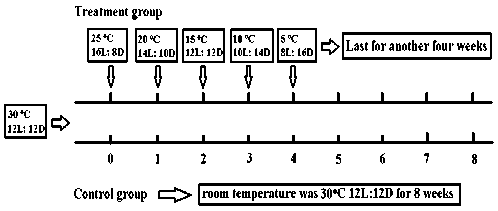
Figure 1 Reducing ambient temperature (from 25oC to 5oC) and photoperiod (from 16L: 8D to 8L: 16D) during experiment for 8 weeks.
Measurement of metabolic rates
Metabolic rates were measured by using AD ML870 open respirometer (AD Instruments, Australia) at 30oC within the TNZ (thermal neutral zone), gas analysis were using ML206 gas analysis instrument, the temperature was controlled by SPX-300 artificial climatic engine (±0.5 oC), the metabolic chamber volume is 500 ml, flow is 200 ml/min at the end. Tree shrews were stabilized in the metabolic chamber for at least 60 min prior to the RMR measurement, oxygen consumption was recorded for more than 120 min at 1 min intervals. Ten stable consecutive lowest readings were taken to calculate RMR (Li and Wang, 2005). Calculate method of metabolic rate is descript in detailed by Hills (Hills, 1972).
Energy budget
Energy budgets were measured from the balance of food intake and fecal output (Song and Wang 2001). Animals were individually housed in metabolic cages (20 cm × 15 cm × 15 cm) without nest materials for one week. They were fed a standard quantity of food each day between 10:00 and 11:00 am. On the following day they were weighed and the remaining food, feces and urine were collected. Residual food and feces were dried to constant weight and dry mass determined to the nearest 0.1 g. The energy contents of the samples were measured using an automatic bomb calorimeter (model YX-ZR/Q, Changsha, China). Gross energy intake(GEI), digestible energy intake (DEI) and digestibility of energy were calculated according to the literature (Liu et al., 2003).
GEI (kJ/day) = Dry food intake (g/day) × caloric value (kJ/g) of dry food;
DEI (kJ/day) = GEI-[mass of feces (g/d) × gross energy content of feces (kJ/day)];
Digestibility(%) = DEI/GEI.
Morphology
The visceral organs, including heart, lung, liver, kidneys, spleen, testes, brown adipose tissue (BAT), white adipose tissue(WAT) around kidneys, WAT around testes and gastrointestinal tract (stomach, small intestine, caecum, large intestine), were extracted and weighed from animals in the control group and the treat group. The stomach and intestines were then rinsed with saline to eliminate all gut contents before being dried and reweighed. The remaining carcass and all of the organs were dried in an oven at 60 °C to constant mass (at least 72 h), and then weighed again to obtain the dry mass.
Statistical analyses
Statistical analyses were performed using SPSS 15.0 for Windows statistical package. Prior to all statistical analyses, data were examined for assumptions of normality and homogeneity of variance, using Kolmogorov-Smirnov and Levene tests, respectively. Differences in body mass, RMR, and energy intake during the course of acclimation were assessed by repeated measures analysis of variance (ANOVA), and significant group differences were further evaluated by Duncan test. Group differences of data between treat group and control group were analyzed by covariance analysis. Results are presented as mean ± SEM and P<0.05 was considered to be statistically significant.
RESULTS
Body mass and RMR
Prior to acclimation, there was no significant difference in body mass between the control and acclimation group (P>0.05). Body mass in treat group gradually increased during the 8-weeks acclimation (Fig. 2). During the course of acclimation, there were significant differences in body mass within the treated group (F=5.361, P<0.01), but not within the control group (F=0.425, P>0.05). Prior to acclimation, BMR in tree shrews showed no significant difference between groups (P>0.05). BMR in treat group gradually increased during the acclimation, but there were no significant differences in RMR within the control group (Fig. 3).
Energy intake
There was no difference in gross energy intake between treated and control tree shrews prior to acclimation (P>0.05). Dry matter intake, energy intake and dry matter intake in treated group of tree shrews increased during acclimation, but digestibility showed no significant difference (Fig 4A, B, C, D). There were no marked differences in dry matter intake, energy intake, dry matter intake and digestibility within the control group during the acclimation course.
Morphology
Small intestine and stomach dry mass, as well as the wet mass of small intestine, heart, lung, liver and kidney were significantly higher in treatment groups than in controls, but no significant differences were found in the mass of other organs and tissues (Table 1).
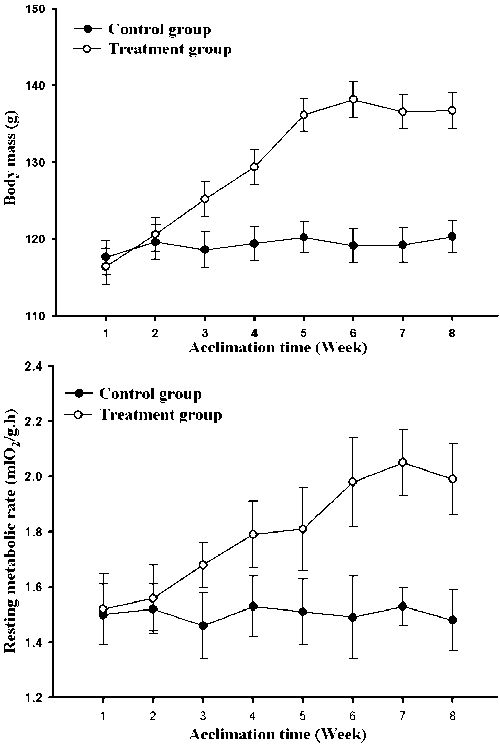
Figure 2 Effects of reducing photoperiod and ambient temperature on body mass in Tupaia belangeri chinensis
Figure 3 Effects of reducing photoperiod and ambient temperature on resting metabolic rate (RMR) in Tupaia belangeri chinensis
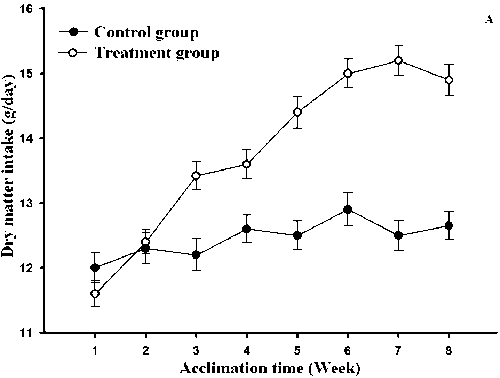
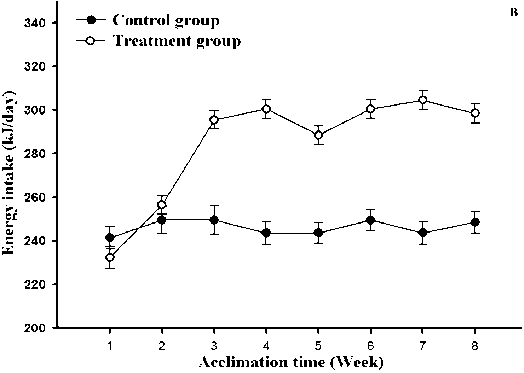
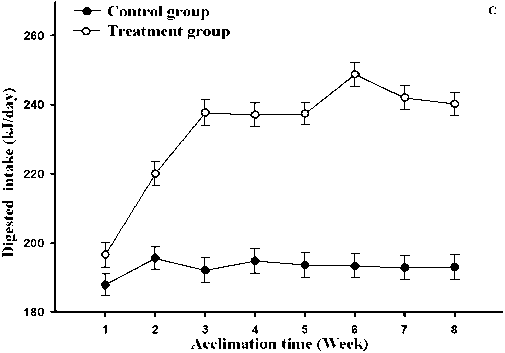
Figure 4 Effects of reducing photoperiod and ambient temperature on dry matter intake (A),energy intake (B), digested energy (C) and digestibility(D) in Tupaia belangeri chinensis
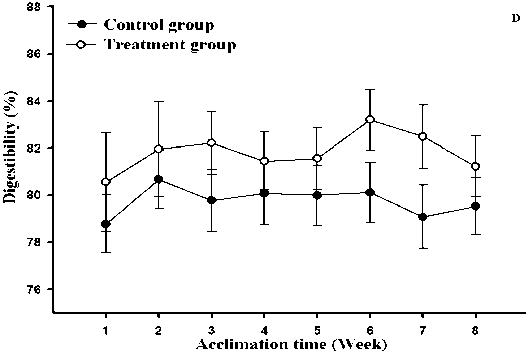
Table 1. Effects of reducing photoperiod and temperature on the organ and tissue masses in Tupaia belangeri chinensis
|
Parameters |
Control group |
Treatment group |
P value |
|
Heart wet mass (g) |
0.590±0.013 |
0.684±0.015 |
<0.05 |
|
Heart dry mass (g) |
0.162±0.009 |
0.164±0.008 |
>0.05 |
|
Lung wet mass (g) |
0.602±0.035 |
0.0596±0.024 |
>0.05 |
|
Lung dry mass (g) |
0.136±0.005 |
0.0140±0.005 |
>0.05 |
|
Liver wet mass |
4.83±0.085 |
5.306±0.094 |
<0.01 |
|
Liver dry mass (g) |
1.690±0.033 |
1.704±0.035 |
>0.05 |
|
BAT wet mass (g) |
0.570±0.007 |
0.572±0.008 |
>0.05 |
|
BAT dry mass (g) |
0.322±0.003 |
0.0348±0.002 |
>0.05 |
|
Kidney wet mass (g) |
1.342±0.046 |
1.570±0.032 |
<0.05 |
|
Kidney dry mass (g) |
0.370±0.004 |
0.378±0.006 |
>0.05 |
|
WAT around kidneys wet mass (g) |
0.582±0.006 |
0.572±0.005 |
>0.05 |
|
WAT around kidneys dry mass (g) |
0.508±0.005 |
0.492±0.005 |
>0.05 |
|
Testes wet mass (g) |
1.912±0.095 |
1.892±0.078 |
>0.05 |
|
Testes dry mass (g) |
0.292±0.004 |
0.302±0.005 |
>0.05 |
|
WAT around testes wet mass (g) |
1.624±0.069 |
1.578±0.088 |
>0.05 |
|
WAT around testes dry mass (g) |
1.370±0.015 |
1.376±0.021 |
>0.05 |
|
Stomach wet mass (g) |
0.832±0.012 |
0.850±0.009 |
>0.05 |
|
Stomach dry mass (g) |
0.164±0.001 |
0.212±0.002 |
<0.05 |
|
Small intestine wet mass (g) |
2.072±0.086 |
2.570±0.091 |
<0.01 |
|
Small intestine dry mass (g) |
0.402±0.006 |
0.482±0.005 |
<0.05 |
|
Caecum wet mass (g) |
1.712±0.089 |
1.662±0.079 |
>0.05 |
|
Caecum dry mass (g) |
0.242±0.005 |
0.246±0.007 |
>0.05 |
|
Large intestine wet mass (g) |
1.162±0.053 |
1.168±0.063 |
>0.05 |
|
Large intestine dry mass (g) |
0.204±0.003 |
0.218±0.008 |
>0.05 |
DISCUSSION
Body weight is an important index to reflect the nutritional status for small mammals, its stability depends on balance between energy intake and energy expenditure. Most small mammals declined body mass to reduce the total energy consumption in the winter, e.g. Clethrionomys glareolus , C. gapperi and M. auratus (Klaus et al., 1988; Merritt and Zegers, 1991; Concannon et al., 2001). When the long photoperiod transform to short photoperiod, body mass in D. groenlandicus increased significantly (Nagy et al., 1995), while P. sungorus were significantly decreased (Klingenspor et al., 2000), which mainly related to reducing of energy intake (Knopper and Boily, 2000). Body mass in rats was lower in a short photoperiod than that under a long photoperiod, which indicted that this is due to redistribution of energy intake in a long photoperiod, Irrelevant to energy intake (Larkin et al., 1991). In the present study, With photoperiod and temperature gradient decreases, body mass increased in the treatment group of tree shrews, which was significantly higher than that of control group, and energy intake also increased significantly, which may be used primarily to maintain body weight homeostasis and resist cold stress, similar to the results in the seasonal changes in tree shrews (Zhu et al., 2012b).
During 8 weeks acclimation, RMR in the treatment group of tree shrews increased significantly, which consistent to the results in seasonal acclimatization research(Zhu et al., 2012b). Many of small mammals had the higher RMR in autumn and winter than that in the summer (Lovegrove, 2005), but there are also some animal’ RMR remains unchanged, such as the plateau pika (Wang et al., 1999). Low temperature and short photoperiod can significantly influence of Brandt's vole RMR, the interaction between the two factors can further enhance this effect (Li et al., 1995).Short photoperiod also had obvious effect on RMR in tree shrews (Zhang et al., 2012a). In our study, long time in low temperature and short photoperiod conditions, RMR in tree shrews increased significantly, which mainly by improving its own metabolism level to adapt to environmental changes.
In the present study, small intestine and stomach, heart, liver, lung and kidney and other organ weight in the treatment group of tree shrews were higher than that in control group, but the testis, adrenal and thymus weight showed no significant difference. When the temperature transform from 30 oC to 6 oC, liver, intestines, stomach and heart weight in rat was also increased significantly (Heroux and Gridgeman, 1958). For R. norvegicus and M. auratus , it showed that heart and lung weight increased significantly under the gradient of the photoperiod and temperature (Deveci and Egginton, 2002). T. belangeri chinese is a hibernating animal, increased heart weight was advanced to resist cold stress.
Digestive tract morphology related to the quality of the food and ingredients, food quality and energy stress in Microtus ochrogaster showed a significant effect on the digestive tract morphology, When faced with low temperature stress, the small intestinal length and weight increased, when feeding with high fiber foods, caecum of length and weight increased (Gross et al., 1985). In our study, dry weight of small intestine and stomach increased as well as energy intake and digest energy were also greatly improved, which indicated that increased the volume of the digestive tract to improving the ability in digest food in T. belangeri chinese .
Moreover, BAT weight were higher in treatment group than that in control group, but the difference was not significant, while the liver wet weight was significantly higher than that of control group. BAT weight increased in the first 4 weeks and declined in the next 4 weeks in M. auratus under a gradual change in photoperiod and temperature conditions (Deveci and Egginton, 2002). Compared with other tissues, increased BAT weight was most obvious during cold acclimation, rat BAT weight increased by 30%, with other parts of the BAT increased by 14%, M. auratus were increased by 35% and 120% (Deveci and Egginton, 2002). BAT weight increases significantly in tree shrews during cold exposure (Zhang et al., 2012b; 2012c). Liver heat production can be accounted for about 25% of total heat production (Schmidt-Nielsen, 1997). Liver mass increased significantly under a gradual change in photoperiod and temperature conditions, which indicated that liver had contribution to the production of heat regulation.
In conclusion, all results suggested that increasing body mass and energy intake, together with adjusting the mass of some organs and tissues, are important physiological changes in tree shrews to adapt the changing environmental conditions.
ACKNOWLEDGMENTS
This study was financially supported by the NSFC (No.31071925;31260097) and Project of Basic research for application in Yunnan Province (No. 2011FZ082).
REFRENCES
Abelenda, M., Ledesma, A., Rial, E., Puerta, M.
(2003) Leptin administration to cold-acclimated rats reduces both food intake and brown adipose tissue thermogenesis. Journal of Thermal Biology , 28 : 525 - 530.
Concannon, P., Levac, K., Rawson, R., Tennant, B., Bensadoun. (2001) Seasonal changes in serum leptin, food intake, and body weight in photo entrained woodchucks. American Journal of Physiology , 281 : R951 - R959.
Deveci, D., Egginton, S. (2002) The effects of reduced temperature and photoperiod on body composition in hibernator and non-hibernator rodents. Journal of Thermal Biology , 27 : 467 -478.
Gross, J.E., Wang, Z.W., Wunder, B.A. (1985) Effects of food quality and energy needs: changes in gut morphology and capacity of Microtus ochrogaster . Journal of Mammalogy , 66 : 661 -667 .
Heldmaier, G.B., Chler, H., Buchberger, A., Lynch, G.R., Puchalski, W., Steinlechner, S., Wiesinger, H. (1985) Seasonal acclimation and thermogenesis. In: Gilles R ed. Circulation, Respiration and Metabolism. Springer, Berlin, Heidelberg, New York, Tokyo. 431 - 501.
Heldmaier, G., Steinlechner, S., Ruf, T., Wiesinger, H., Klingenspor, M. (1989) Photoperiod and thermoregulation in vertebrates: body temperature and thermogenic acclimation. Journal of Biological Rhythms , 4 : 251 - 265.
Heroux, O., Gridgeman, N.T. (1958) The effect of cold acclimation on the size of organs and tissues of the rat, with special reference to modes of expression of results. Canadian Journal of Biochemistry and Physiology , 36 :209 - 216 .
Hill, R.W. (1972) Determination of oxygen consumption by use of the paramagnetic oxygen analyzer. Journal of Applied Physiology , 33 : 261-263.
Klaus, S., Heldmaier, G., Ricquier, D. (1988) Seasonal acclimation of bank voles and wood mice: nonshivering thermogenesis and thermogenic properties of brown adipose tissue mitochondria. Journal of Comparative Physiology B , 158 : 157 - 164.
Klingenspor, M., Niggemann, H., Heldmaier, G. (2000) Modulation of leptin sensitivity by short photoperiod acclimation in the Djungarian hamster Phodopus sungorus . Journal of Comparative Physiology B , 170 : 37 - 43.
Knopper, L.D., Boily, P. (2000) The energy budget of captive Siberian hamsters, Phodopus sungorus , exposed to photoperiod changes: mass loss is caused by a voluntary decrease in food intake. Physiological and Biochemical Zoology , 73 : 517 - 522.
Larkin, L.M., Moore, B.J., Stern, J.S., Horwitz, B.A. (1991) Effects of photoperiod on body weight and food intake and energy expenditure in young rats. Life Sciences , 62 :913 - 919.
Li, Q.F., Huang, C.X., Liu, X.T. (1995) Effects of photoperiod and temperature on thermogenesis in Brandt’s voles ( Microtus brandtii ). Acta Zoologica Sinica , 41(4): 362 -369.
Li, Q.F., Li, N., Sun, R.Y. (1994) The adaptive thermogenesis of Brandt’s voles ( M icrotus brandtii ) during cold exposure. Acta
Theriologica Sinica , 14(4) : 286 - 293.
Li, Q.F., Sun, R.Y., Huang, C.X., Wang, Z.K., Liu, X.T., Hou, J.J. (2001) Cold adaptive thermogenesis in small mammals from different geographical zones of China. Comparative Biochemistry and Physiology A , 129 : 949 - 961.
Li, X.S., Wang, D.H., Yang, J.C. (2003) Effects of photoperiod on body weights and energy metabolism in Brandt’s voles and Mongolian gerbils. Acta Theriologica Sinica, 23(4): 304 -311.
Li, X.S., Wang, D.H., Yang, J.C. (2004) Effects of cold acclimation on body weight,serum leptin level,energy metabolism and thermogenesis in the Mongolian gerbil Meriones unguiculatus . Acta Zoologica Sinica , 50 (3) : 334 - 340.
Li, X.S., Wang, D.H. (2005) Regulation of body weight and thermogenesis in seasonally acclimatized Brandt’s voles ( Microtus brandtii ). Hormones and Behavior , 48 : 321 - 328.
Liu, H., Wang, D.H, Wang, Z.W. (2003) Energy requirement during reproduction in female Brandt’s voles ( Microtus brandtii ). Journal of Mammology , 84(4) : 1410 - 1416.
Lovegrove, B.G. (2005) Seasonal thermoregulatory responses in mammals. Journal of Comparative Physiology B , 175 : 231 - 247.
Merritt, J.F., Zegerts, D.A. (1991) Seasonal thermogenesis and body mass dynamics of Clethrionomys gapperi . Canadian Journal of Zoology , 69 : 2771 - 2777.
Nagy, T.R., Gower, B.A., Stetson, M.H. (1995) Endocrine correlates of seasonal body mass dynamics in the collared lemming Dicrostonyx groenlandicus . American Zoologist , 35 : 246 -258.
Schmidt-Nielsen, K. (1997) Temperature regulation. In: Schmidt-Nielsen K. Animal Physiology: adaptation and environment (5th edition). Cambridge: Cambridge University Press.
Song, Z.G., Wang, D.H. (2001) Maximum energy assimilation rate in Brandt’s vole Microtus brandtii from Inner Mongolia grassland. Acta Theriologica Sinica , 21(4) : 271 - 278.
Tomasi, T.E., Mitchell, D.A. (1996) Temperature and photoperiod effects on thyroid function and metabolism in cotton rats ( Sigmodon hispidus ). Comparative Biochemistry and Physiology A , 113 : 267 - 274.
Wang, D.H., Sun, R.Y., Wang, Z.W., Liu, J.S., Chen, Z. (1996) Adaptive thermogenic properties during cold exposure in root voles ( Microtus oeconomus ). Acta Zoologica Sinica , 42 (4) : 368 -376.
Wang, D.H., Sun, R.Y., Wang, Z.W., Liu, J.S. (1999) Effects of temperature and photoperiod on thermogenesis in plateau pikas (Ochotona curzoniae)and root voles (Microtus oeconomus). Journal of Comparative Physiology B, 169 : 77 - 83.
Wang, Y.X., Li, C.Y., Ma, S.L. (1991) Class and zoology of Tupaia belangeri . In: Peng YZ, editors. Biology of Tupaia belangeri . Kunming: Yunnan Science and technology Press. pp. 21– 70.
Wang, Z.K., Sun, R.Y., Li, Q.F., Fang, J.M. (1994) Characteristics of the resting metabolic rate of the tree shrews ( Tupaia belangeri ). Acta Theriologica Sinica 30 : 408–414
Zhang, L., Zhu, W.L., Wang, Z.K. (2012a) Role of photoperiod on hormone concentrations and adaptive capacity in tree shrews, Tupaia belangeri . Comparative Biochemistry and Physiology , 163 : 253-259.
Zhang, L., Zhang, H., Zhu, W.L., Li, X.S., Wang, Z.K. (2012b) Energy metabolism, thermogenesis and body mass regulation in tree shrew ( Tupaia belangeri ) during subsequent cold and warm acclimation. Comparative Biochemistry and Physiology , 162 : 437-442.
Zhang, L., Liu, P.F., Zhu, W.L., Wang, Z.K. (2012c) Variations in thermal physiology and energetic of the tree shrew ( Tupaia belangeri ) in response to cold acclimation. Journal of Comparative Physiology B 182 : 167-176.
Zhao, Z.J., Wang, D.H. (2005) Short photoperiod enhances thermogenic capacity in Brandt’s voles. Physiology and Behavior , 85 : 143 - 149.
Zhao, Z.J., Wang, D.H. (2006a) Effects of photoperiod on energy budgets and thermogenesis in Mongolian gerbils ( Meriones unguiculatus ). Journal of Thermal Biology , 31 : 323 - 331.
Zhao, Z.J., Wang, D.H. (2006b) Short photoperiod influences energy intake and serum leptin level in Brandt’s voles ( Microtus brandtii ). Hormones and Behavior , 49 : 463 - 469.
Zhu, W.L., Cai, J.H., Lian, X., Wang, Z.K. (2011) Effects of photoperiod on energy intake, thermogenesis and body mass in Eothenomys miletus in Hengduan Mountain region. Journal of Thermal Biology , 36(8) : 380-385.
Zhu, W.L., Jia, T., Lian, X., Wang, Z.K. 2010a. Effects of cold acclimation on body mass, serum leptin level, energy metabolism and thermognesis in Eothenomys miletus in Hengduan Mountains region. Journal of Thermal Biology , 35(1) : 4146.
Zhu, W.L., Wang, B., Cai, J.H., Lian, X. and Wang, Z.K. (2011b) Thermogenesis, energy intake and serum leptin in Apodemus chevrieri in Hengduan Mountains region during cold acclimation. Journal of Thermal Biology , 36(3) : 181-186.
Zhu, W.L., Jia, T., Huang, C.M., Zhang, L., Wang, Z.K. (2012a) Changes of energy metabolism, thermogenesis and body mass in the tree shrew (Tupaia belangeri chinensis) during cold exposure. Italian Journal of Zoology. 1: 1-7.
Zhu, W.L., Zhang, H., Wang, Z.K. (2012b) Seasonal changes in body mass and thermogenesis in tree shrews (Tupaia belangeri) the roles of photoperiod and cold. Journal of Thermal Biology, 37: 479-484.
Список литературы Effects of gradient photoperiod and temperature on energy metabolism and body composition in Tupaia belangeri Chinensis
- Abelenda, M., Ledesma, A., Rial, E., Puerta, M. (2003) Leptin administration to cold-acclimated rats reduces both food intake and brown adipose tissue thermogenesis. Journal of Thermal Biology, 28: 525 -530.
- Concannon, P., Levac, K., Rawson, R., Tennant, B., Bensadoun. (2001) Seasonal changes in serum leptin, food intake, and body weight in photo entrained woodchucks. American Journal of Physiology, 281: R951 -R959.
- Deveci, D., Egginton, S. (2002) The effects of reduced temperature and photoperiod on body composition in hibernator and non-hibernator rodents. Journal of Thermal Biology, 27: 467 -478.
- Gross, J.E., Wang, Z.W., Wunder, B.A. (1985) Effects of food quality and energy needs: changes in gut morphology and capacity of Microtus ochrogaster. Journal of Mammalogy, 66: 661 -667.
- Heldmaier, G.B., Chler, H., Buchberger, A., Lynch, G.R., Puchalski, W., Steinlechner, S., Wiesinger, H. (1985) Seasonal acclimation and thermogenesis. In: Gilles R ed. Circulation, Respiration and Metabolism. Springer, Berlin, Heidelberg, New York, Tokyo. 431 -501.
- Heldmaier, G., Steinlechner, S., Ruf, T., Wiesinger, H., Klingenspor, M. (1989) Photoperiod and thermoregulation in vertebrates: body temperature and thermogenic acclimation. Journal of Biological Rhythms, 4: 251 -265.
- Heroux, O., Gridgeman, N.T. (1958) The effect of cold acclimation on the size of organs and tissues of the rat, with special reference to modes of expression of results. Canadian Journal of Biochemistry and Physiology, 36:209 -216.
- Hill, R.W. (1972) Determination of oxygen consumption by use of the paramagnetic oxygen analyzer. Journal of Applied Physiology, 33: 261-263.
- Klaus, S., Heldmaier, G., Ricquier, D. (1988) Seasonal acclimation of bank voles and wood mice: nonshivering thermogenesis and thermogenic properties of brown adipose tissue mitochondria. Journal of Comparative Physiology B, 158: 157 -164.
- Klingenspor, M., Niggemann, H., Heldmaier, G. (2000) Modulation of leptin sensitivity by short photoperiod acclimation in the Djungarian hamster Phodopus sungorus. Journal of Comparative Physiology B, 170: 37 -43.
- Knopper, L.D., Boily, P. (2000) The energy budget of captive Siberian hamsters, Phodopus sungorus, exposed to photoperiod changes: mass loss is caused by a voluntary decrease in food intake. Physiological and Biochemical Zoology, 73: 517 -522.
- Larkin, L.M., Moore, B.J., Stern, J.S., Horwitz, B.A. (1991) Effects of photoperiod on body weight and food intake and energy expenditure in young rats. Life Sciences, 62:913 -919.
- Li, Q.F., Huang, C.X., Liu, X.T. (1995) Effects of photoperiod and temperature on thermogenesis in Brandt’s voles (Microtus brandtii). Acta Zoologica Sinica, 41(4): 362 -369.
- Li, Q.F., Li, N., Sun, R.Y. (1994) The adaptive thermogenesis of Brandt’s voles (M icrotus brandtii) during cold exposure. Acta Theriologica Sinica, 14(4): 286 -293.
- Li, Q.F., Sun, R.Y., Huang, C.X., Wang, Z.K., Liu, X.T., Hou, J.J. (2001) Cold adaptive thermogenesis in small mammals from different geographical zones of China. Comparative Biochemistry and Physiology A, 129: 949 -961.
- Li, X.S., Wang, D.H., Yang, J.C. (2003) Effects of photoperiod on body weights and energy metabolism in Brandt’s voles and Mongolian gerbils. Acta Theriologica Sinica, 23(4): 304 -311.
- Li, X.S., Wang, D.H., Yang, J.C. (2004) Effects of cold acclimation on body weight,serum leptin level,energy metabolism and thermogenesis in the Mongolian gerbil Meriones unguiculatus. Acta Zoologica Sinica, 50 (3): 334 -340.
- Li, X.S., Wang, D.H. (2005) Regulation of body weight and thermogenesis in seasonally acclimatized Brandt’s voles (Microtus brandtii). Hormones and Behavior, 48: 321 -328.
- Liu, H., Wang, D.H, Wang, Z.W. (2003) Energy requirement during reproduction in female Brandt’s voles (Microtus brandtii). Journal of Mammology, 84(4): 1410 -1416.
- Lovegrove, B.G. (2005) Seasonal thermoregulatory responses in mammals. Journal of Comparative Physiology B, 175: 231 -247.
- Merritt, J.F., Zegerts, D.A. (1991) Seasonal thermogenesis and body mass dynamics of Clethrionomys gapperi. Canadian Journal of Zoology, 69: 2771 -2777.
- Nagy, T.R., Gower, B.A., Stetson, M.H. (1995) Endocrine correlates of seasonal body mass dynamics in the collared lemming Dicrostonyx groenlandicus. American Zoologist, 35: 246 -258.
- Schmidt-Nielsen, K. (1997) Temperature regulation. In: Schmidt-Nielsen K. Animal Physiology: adaptation and environment (5th edition). Cambridge: Cambridge University Press.
- Song, Z.G., Wang, D.H. (2001) Maximum energy assimilation rate in Brandt’s vole Microtus brandtii from Inner Mongolia grassland. Acta Theriologica Sinica, 21(4): 271 -278.
- Tomasi, T.E., Mitchell, D.A. (1996) Temperature and photoperiod effects on thyroid function and metabolism in cotton rats (Sigmodon hispidus). Comparative Biochemistry and Physiology A, 113: 267 -274.
- Wang, D.H., Sun, R.Y., Wang, Z.W., Liu, J.S., Chen, Z. (1996) Adaptive thermogenic properties during cold exposure in root voles (Microtus oeconomus). Acta Zoologica Sinica, 42 (4): 368 -376.
- Wang, D.H., Sun, R.Y., Wang, Z.W., Liu, J.S. (1999) Effects of temperature and photoperiod on thermogenesis in plateau pikas (Ochotona curzoniae)and root voles (Microtus oeconomus). Journal of Comparative Physiology B, 169: 77 -83.
- Wang, Y.X., Li, C.Y., Ma, S.L. (1991) Class and zoology of Tupaia belangeri. In: Peng YZ, editors. Biology of Tupaia belangeri. Kunming: Yunnan Science and technology Press. pp. 21-70.
- Wang, Z.K., Sun, R.Y., Li, Q.F., Fang, J.M. (1994) Characteristics of the resting metabolic rate of the tree shrews (Tupaia belangeri). Acta Theriologica Sinica 30: 408-414
- Zhang, L., Zhu, W.L., Wang, Z.K. (2012a) Role of photoperiod on hormone concentrations and adaptive capacity in tree shrews, Tupaia belangeri. Comparative Biochemistry and Physiology, 163: 253-259.
- Zhang, L., Zhang, H., Zhu, W.L., Li, X.S., Wang, Z.K. (2012b) Energy metabolism, thermogenesis and body mass regulation in tree shrew (Tupaia belangeri) during subsequent cold and warm acclimation. Comparative Biochemistry and Physiology, 162: 437-442.
- Zhang, L., Liu, P.F., Zhu, W.L., Wang, Z.K. (2012c) Variations in thermal physiology and energetic of the tree shrew (Tupaia belangeri) in response to cold acclimation. Journal of Comparative Physiology B 182: 167-176.
- Zhao, Z.J., Wang, D.H. (2005) Short photoperiod enhances thermogenic capacity in Brandt’s voles. Physiology and Behavior, 85: 143 -149.
- Zhao, Z.J., Wang, D.H. (2006a) Effects of photoperiod on energy budgets and thermogenesis in Mongolian gerbils (Meriones unguiculatus). Journal of Thermal Biology, 31: 323 -331.
- Zhao, Z.J., Wang, D.H. (2006b) Short photoperiod influences energy intake and serum leptin level in Brandt’s voles (Microtus brandtii). Hormones and Behavior, 49: 463 -469.
- Zhu, W.L., Cai, J.H., Lian, X., Wang, Z.K. (2011) Effects of photoperiod on energy intake, thermogenesis and body mass in Eothenomys miletus in Hengduan Mountain region. Journal of Thermal Biology, 36(8): 380-385.
- Zhu, W.L., Jia, T., Lian, X., Wang, Z.K. 2010a. Effects of cold acclimation on body mass, serum leptin level, energy metabolism and thermognesis in Eothenomys miletus in Hengduan Mountains region. Journal of Thermal Biology, 35(1): 41-46.
- Zhu, W.L., Wang, B., Cai, J.H., Lian, X. and Wang, Z.K. (2011b) Thermogenesis, energy intake and serum leptin in Apodemus chevrieri in Hengduan Mountains region during cold acclimation. Journal of Thermal Biology, 36(3): 181-186.
- Zhu, W.L., Jia, T., Huang, C.M., Zhang, L., Wang, Z.K. (2012a) Changes of energy metabolism, thermogenesis and body mass in the tree shrew (Tupaia belangeri chinensis) during cold exposure. Italian Journal of Zoology. 1: 1-7.
- Zhu, W.L., Zhang, H., Wang, Z.K. (2012b) Seasonal changes in body mass and thermogenesis in tree shrews (Tupaia belangeri) the roles of photoperiod and cold. Journal of Thermal Biology, 37: 479-484.

